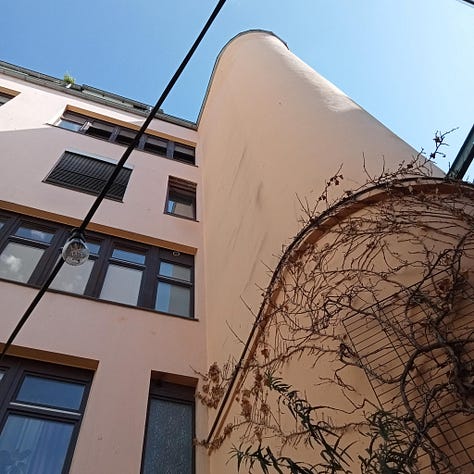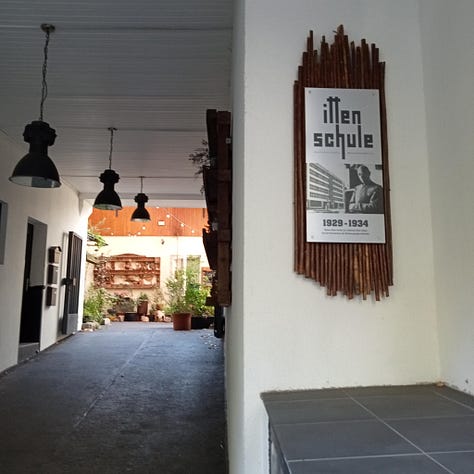


Kunstler sein
heißt Chaos erleben
und Einheit ersehnen
in seinem Gestalten.
To be an artist
means to discover chaos,
and to yearn for harmony
in your work.
— Johannes Itten
Johannes Itten is best known among art-historians as the curriculum-designer of the “Foundation Course” (Grundkurse) at the first Bauhaus School, in Weimar (1919-24). (The Foundation Course was the only one that Bauhaus students were required to take.)
Early in his career, the Swiss artist decided that he would labor as a teacher, as opposed to making money as an artist. (After he died, his widow said he rarely sold any of his work, preferring to give it away.)
Itten was hired in late summer 1919 by the Bauhaus State School’s director, Berlin architect Walter Gropius (1883-1969). The artist arrived in Weimar that fall, at about the same time as a group of students he’d been teaching in Vienna — seventeen students, male and female, whom Gropius had willingly accepted at the school.
“Itten was an extraordinary teacher who laid the foundation for the Bauhaus,” Gropius told a BBC interviewer in 1968. “But…he was against my idea of building up the student(s) with a real good crafts education and there was a clash between us, and he was through. And I was sorry about this because he was a strong personality and gave very much to (the school).”
Another way of seeing it: Gropius was focused on a Bauhaus of products — the plans or actual things (notably houses and furnishings) that students might produce; while Itten was more focused on the students themselves and their intellectual development — how they understood creative work and its object across a range of media.




